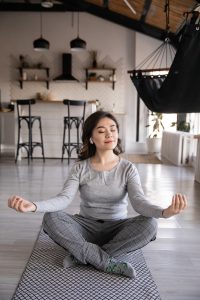A person’s mental health plays a significant role in how they live their everyday life. Through meditation, one’s mental health could see a vast improvement. Your mental health can very much determine how your daily life plays out. As such, knowing how to meditate can be an excellent outlet to decompress and find relaxation amidst any life stresses you may encounter. Without a doubt, it’s one of the most popular self care ideas that many people turn to.
What is Meditation?
Meditation is the process of thinking deeply or focusing one’s mind for some time in the quest to feel inner peace and relaxation. This will help you overcome many adverse health problems associated with stress, depression, anxiety, anger, and fear. Hence, many consider meditation as a way to improve your mental health. It’s also a good practice for when you want to cultivate a healthy lifestyle. Additionally, knowing how to meditate can help bring focused attention to the present moment without judgment and with self-compassion.
Many researchers over the years across the world have found and proven that learning how to meditate can help you fight against negative emotions and feelings. The JAMA Internal medicine researchers, in March 2014, published a review that shows that if meditation is carried out for eight weeks at least, a patient will experience reducing symptoms of anxiety and depression. The group reviewed 18,000 scientific studies centered on the relationship between meditation, depression, and anxiety.
Another group of researchers, Psychiatry Review, published a journal in 2018 that shows that a Mindfulness-Based Stress Reduction (MBSR) program was carried out by generalized anxiety disorder patients where they learned many stress management strategies. The result showed that the patients had lower stress-related inflammatory and hormonal levels than people who did not practice mindfulness.
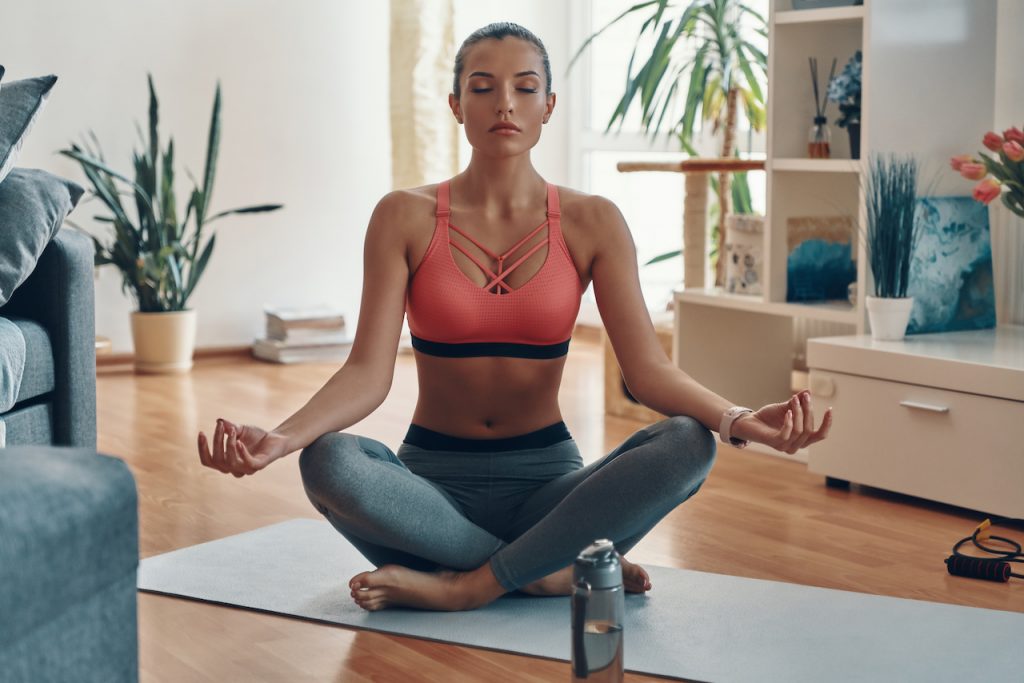

How To Meditate
The first thing you need when learning how to meditate is to prepare your mind and body to carry out the various meditation techniques accurately. Most importantly, you should have the perseverance and endurance to filter your thoughts. Allow your thoughts to really sink in while meditating. There really is no shortcut or cutting corners on the road to success. The same can be said about meditation. Although the process might not be the easiest, if you’re dedicated to letting go of your emotions, meditating can be a piece of cake.
For starters, you don’t need a lot of need to start meditation. Just you and a handful of perseverance will suffice. However, it’s best to get into a comfortable position.
Find a Perfect Spot to Sit On
When you want to meditate, it doesn’t matter whether you sit on a cushion or use a yoga mat. In the end, the key to meditation is to find a comfortable space and to stay focused. The last thing you want is a distraction. That said, be sure you are comfortable first and foremost when you begin your meditation session. You don’t want to have to worry about your own comfort when seeking inner peace.
Use a Timer
A timer can be an efficient tool to help you meditate properly. As meditation deals with a lot of inner focus, stopping to check the time can be a distraction in itself. Thus, using a timer can help eliminate the distraction of having to check on your meditation intervals. You can use your smartphone as your timer, but do make sure to keep it a good distance away from you when meditating. After all, you don’t want to be distracted by your own smartphone when you need to be relaxing, right?
What Are The Best Meditation Techniques?
Experienced meditators and researchers agree on one basic fact: that is, meditation helps improve and maintain mental and physical health. However, they do not all agree on which meditation technique is the best and most effective. As we all know, each and every body reacts differently. There are more than 100 meditation techniques covering practices from different cultures, traditions, religions, and spiritual disciplines. Hence, your individual preference will guide you on which meditation technique is the best or most effective for you. Below are some of the most universally accepted meditation techniques.
Guided vs Unguided Meditation
Guided Meditation
This is the type of meditation for beginners who have no meditation experience. As its name suggests, this technique involves a teacher guiding their student on how to meditate. They instruct inform and assist their pupil with various meditation practices. Guided Meditation can be done either in person or even through a meditation app. In this type of meditation, the teacher teaches you modus-operandi of the mind during meditation and guides you through a particular meditation technique. Additionally, they explain how to link the meditation technique to your everyday routine.
Unguided Meditation
Unlike its counterpart, Unguided Meditation is mostly practiced by those who have some experience in one or more meditation techniques. It is more easily achieved by those who can maintain deep meditation on their own. Here, you meditate alone and without a teacher explaining the process. It is also called Silent Meditation. For many practitioners, it involves simply sitting in a quiet place and paying attention to the mind and body for a set period of time. For others, Unguided Meditation involves practicing a particular meditation technique they’ve learned and connected with.


Calming vs. Insight Meditation
Calming Meditation
This meditating technique aims to create a more quiet and peaceful state of mind. It is through this that Calming Meditation helps improve concentration. This technique involves focusing your mind on a particular object, especially when you find your thoughts wandering. With the Calming Meditation technique, you compel yourself to think back on that particular object whenever you become distracted. Said object can be a sensation within your body, a visualization, your breath, or even a physical belonging.
Insight Meditation
Also known as Vipassana Meditation, Insight Meditation has to do with transforming your mind by developing qualities such as compassion and wisdom. Here, you have to focus your breath and at the same time be conscious of all the physical and mental sensations that arise. Notably, Insight Meditation is best when done outdoors.
Loving Kindness Meditation
When it comes to Loving Kindness Meditation, you are tasked to focus your mind, shut your eyes, and think about the person you love. That said, it’s clear that this technique is fairly straightforward. It can also be categorized into Loving Kindness Receiving Technique or the Love Sending Technique. In both situations, you can visualize someone you love either from your past or present. It could be someone who’s closely related to you, like family and relatives. Alternatively, you could also visualize friends, close peers, or even a mentor.
All you need is to visualize your loved ones sending you irreplaceable love and to embrace their affection and appreciation. It works the same way if you’re sending the love instead of receiving it, too.
Skillful Compassion Meditation
This technique is quite similar to a Loving Kindness Meditation technique. But, with Skillful Compassion Mediation, you have to focus on a person you love or know – all while you pay attention to the sensations emanating from the heart. This will help you create a feeling of love and happiness in your own mind.
Resting Awareness
In contrast to the other meditation techniques, Resting Awareness involves putting your mind at rest. Here, there is no need to focus on breath or visualization. Though some stray thoughts may enter your mind, they will not actually distract you. As your mind is at rest, any stray thoughts will merely drift away and not linger.
Reflection
Reflection entails focusing on one question to ponder in. This could be a question such as, “What are you most thankful for?” Or, you could reflect on your strengths and how to further improve on them. It’s important to note here that what matters most here are the feelings that arise when reflecting on such questions. Focus not on the thoughts that arise, but how you feel upon such reflections to your inquiries.
Body Scan
This technique is meant to synchronize your mind and body. It helps stop your mind from being elsewhere when your body is doing a particular thing. Here, you perform a mental scan of your body, from head to toe. From here, the aim is to spot any discomfort or tensions in your body during this scan. By identifying any body discomfort, you can learn to identify which areas of your body need work on the most. This, ultimately, will help you relax better when meditating.
Focused Attention
Another straightforward form of meditating, Focused Attention is as its name suggests. You focus all your attention on one thing or concept. In this case, Focused Attention involves focusing on your breath in particular. Not only does this help maintain awareness, it also helps anchor your mind while meditating. Whenever you feel your mind wandering, simply re-focus on your breath to re-center your attention once more.
Visualization
As a meditation technique, Visualization works similarly to Focused Attention. It involves focusing your attention once more, but this time, you focus on a mental image instead of your breath. This mental image can be either a someone or a something.
Some people may find Visualization challenging, though. After all, as relaxing as meditation is, it also requires a good amount of mental effort. However, having a more specific mental image may help others focus better. Through Visualization, you are able to focus on any physical sensations. This is on top of being able to observe your mental state while you meditate as well.
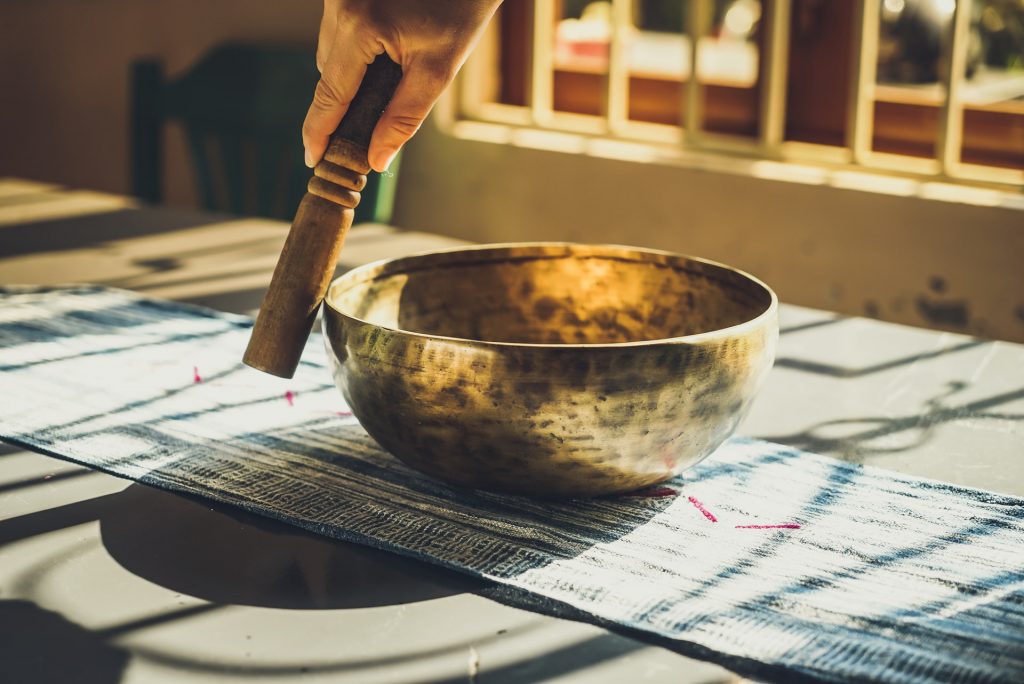

Ancient Meditation Techniques
The aforementioned meditation techniques are only some of many ways on how to meditate. On that note, it’s also worth exploring older, more “traditional” techniques as well. Figuring out which meditation technique works best for you is a journey in itself, after all. So, why not look into some ancient meditation techniques? Do take note, though, that these techniques are best carried out under the guidance of an experienced instructor. This is to ensure not just your own safety, but also to get the most out of your meditation.
Zen Meditation
Rooted in Buddhist psychology, Zen Meditation targets to create a sense of alertness and presence. It involves sitting upright and following your breath as your belly moves in and out. When practicing Zen Meditation, allow your mind to “just be” and simply “think without thinking.” Ultimately, this practice aims to regulate your attention.
Mantra Meditation
Mantra Meditation is similar to the aforementioned Focused Attention technique. However, with Mantra Meditation, you focus on a mantra instead of your breath. It is quite similar to the technique ‘focused attention’ meditation (discussed above), but in this technique, you are required to focus on a mantra instead of focusing on the breath to quiet the mind.
Yoga Meditation
Yoga in itself incorporates meditation. The two are commonly associated with one another, so how does one differentiate the two? Just think of yoga as a form of meditation. It helps warm up your body in preparation for meditation by relaxing your muscles and relieving tension.
Sound Bath Meditation
This type of meditation requires instruments such as gongs, bowls, and other ancient musical instruments to create sound vibrations that help you focus your mind and bring it into a state of peace and relaxation.
Chakra Meditation
This type of meditation entails keeping your body’s core chakras aligned and opened. Having blocked or imbalanced chakras (your body’s centers of energy) may result in discomfort on both a physical and mental plane. Chakra Meditation can thus help alleviate such symptoms and bring back balance to your centers of energy.
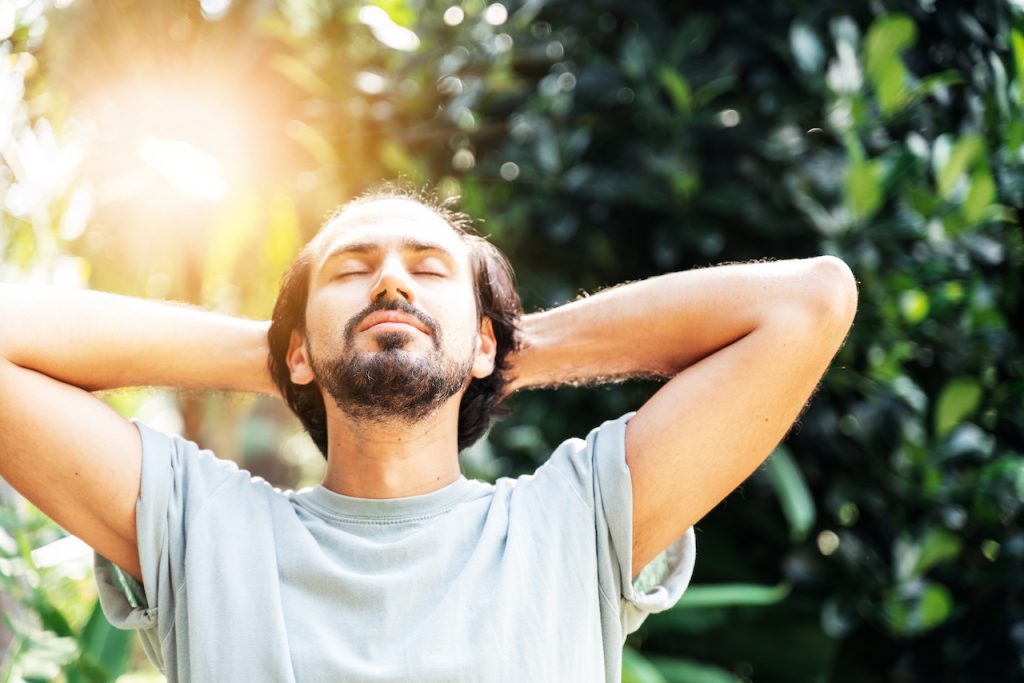

What is Walking Meditation?
Walking Meditation, also known as kinhin, is a type of meditation practice that focuses and sets the physical experience of walking as the object of meditation. With Walking Meditation, you have to pay very keen attention to each step you take. It helps bring your body and mind in sync as you move about at a much slower speed than normal walks. You could consider Walking Meditation as a more special approach to meditation, as it involves more physical movements compared to other types of meditation.
How to Carry Out Walking Meditation
- Choose Your Location
Ideally, practicing Walking Meditation is best when done in a private place. This can help you avoid getting in the way of others, especially as you need to be mindful of your steps. You can try using your backyard, or even inside your house to avoid any unnecessary distractions.
- Length
Walking Meditation should be done for at least 15 minutes. Others suggest starting off with 10 minutes for at least a week when you first establish your Walking Meditation routine.
- Walking Pace
Your steps should be slower and shorter than your usual walking steps. Slow walking will enable you to stay focused and relaxed.
- Anchoring
You should spend some time standing on a spot before you start your walking meditation. Take a deep breath, close your eyes, and bring your awareness to your body.
- Re-focusing
It’s common that sometimes you may be distracted by some unwanted thoughts when you first begin meditating. Try to regain focus by bringing your attention back to breathing and your walking.
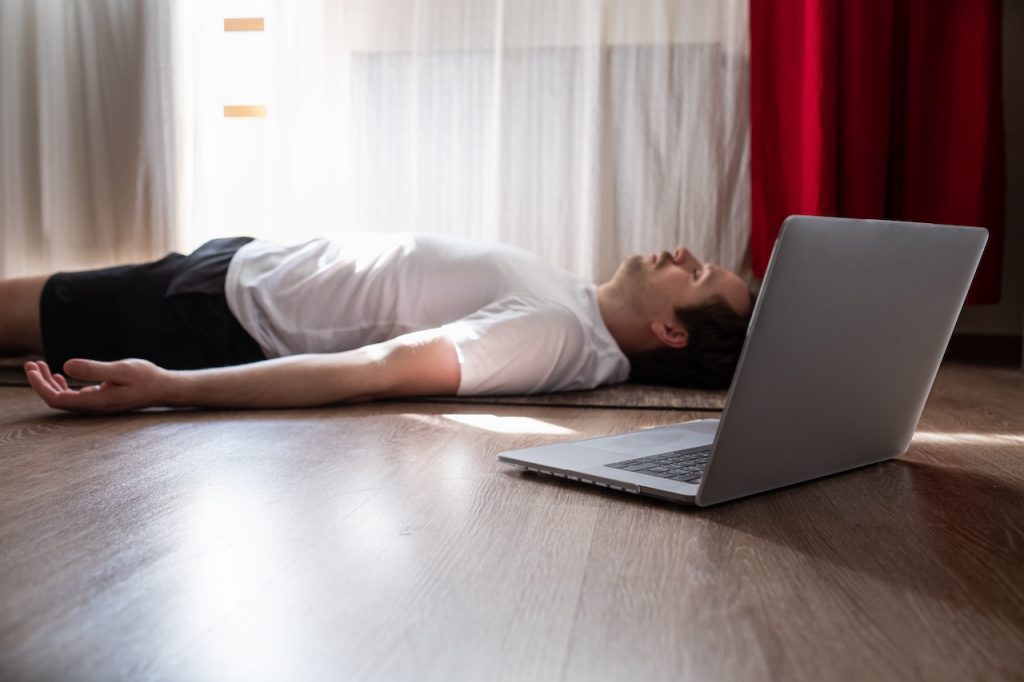

What is Spiritual Meditation?
Spiritual Meditation is a particular type of meditation that has to do with connecting to something greater and deeper than yourself. This mindful practice cuts across all kinds of religions across the world.
Spiritual Meditation is also a form of Guided Meditation in that you need a spiritual teacher who intends to guide you into the spiritual realm. It also brings a sense of spiritual awareness to oneself and is a step towards becoming the best human being that you can be.
How to Achieve Spiritual Meditation
Here are the five essential criteria you need to fulfill when practicing spiritual meditation:
- Release any grudges you have been holding in order to free your mind.
- Focus your spiritual aspirations on others.
- Bring mindfulness into your faith.
- Open your mind to new possibilities.
- Be authentic.
When is the Best Time to Meditate?
The best time to meditate depends mostly on what you seek to achieve during or after the meditation exercise. However, apart from the deep meditation techniques discussed above which need to be carried out in a specified period, there are also some other mini-meditations which can be done anywhere and anytime. You just have to relax your body and calm your mind.
Many experts suggest meditating first thing in the morning, as this will set the tone of your mind and body throughout the day. It is recommended to meditate right before breakfast as a way to start your day.
There are no strict rules as to when you should meditate, though. Meditation should be a relaxing activity, so pursue whenever it is most convenient for you. There are other suggested times of the day to meditate as well, such as:
Whenever You are Stressed
Feeling stressed or overwhelmed? Try turning to meditation. You could try meditating before lunchtime or at midday to help prepare your mental state for the next half of your day. Meditating when you’re stressed can be a good way to free your mind and body of stress after a long meeting. Doing meditation at this time of the day can also help boost your creativity, focus, and productivity.
End of Your Work Day
Meditating at the end of the work day is an efficient way of establishing boundaries between your work hours and leisure hours. Nothing beats relaxing at the end of a stressful work day, right?It’s important to separate your work life from your personal life, so meditating at the end of your work hours can help draw a line between the two. This can also help you keep work thoughts away once you’ve signed off for the day.
Right Before Bedtime
One way to prepare your body for sleep is to meditate just before bed. Since meditation helps relax the mind and body, meditating right before bedtime can quiet your mind, thus helping you sleep better. It may even reduce insomnia and other sleep issues by establishing an overall sense of calm in your mind and body.
What Are the Benefits of Meditation?
There are many health benefits to meditating, especially once it has been incorporated into your daily routine. Besides promoting a sense of inner peace and relaxation, other benefits of meditation include:
- Improvement in concentration, learning, and memory.
- An increased amount of grey matter in your brain.
- Help you reduce stress, anxiety, and depression.
- Meditation is said to increase your ability to handle new situations or information.
- Meditating can help facilitate better and more restful sleep.
- You develop a better sense of empathy and compassion towards others.
- Meditation can help you find more emotional balance and helps your mind defragment.
Why You Should Learn How to Meditate
It goes without saying that it’s crucial to maintain your well-being – both physical and mental. There are many avenues to help promote this, with meditation being one of them. Besides the many health benefits that come with a regular meditation routine, knowing how to meditate is also great overall as a form of self-care. Meditation is, without a doubt, a simple but effective way of improving your wellbeing. It’s a good practice to incorporate into your daily life, especially if you’re the type who often drowns in the stresses of the real world.
Whether you choose to meditate outdoors or make use of some relaxing meditation music, ultimately, how you approach meditation should be tailored to you. We may have outlined some tips and informed you of the different meditation techniques, but don’t let that dictate how you want to meditate. You should meditate however way you want to. Meditation may be stepped in some ancient traditions, but at the end of the day, what will matter most is how you can make it work for yourself.


